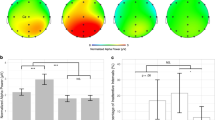Abstract
Attention is one of the most widely misused and overgeneralized constructs found in the educational, learning, instructional, and psychological sciences. It would be convenient for teachers if they could grasp the attentiveness states of learners in their classes precisely so that they could try to improve the way to deliver the course material in a manner that could attract more learners. When students are doing learning activities using the news technologies is very hard for the teacher detected if each student her/his level of attentiveness. Furthermore, different student learn in different ways, each one preferring a different learning style. This paper presents an experience using different learning styles with a system that monitoring attention, with the aim of providing a non-intrusive and non-invasive way, reliable and easy tool that can be used freely in schools, without changing or interfering with the established working routines. Specifically, we look at desk students in learning activities, in which the student spends long time interacting with the computer.
Access this chapter
Tax calculation will be finalised at checkout
Purchases are for personal use only
Similar content being viewed by others
References
Carroll, J.M.: Human-computer interaction: psychology as a science of design. Annu. Rev. Psychol. 48, 61–83 (1997). doi:10.1146/annurev.psych.48.1.61
Eggen, P., Kauchak, D.P.: Educational Psychology: Classroom Connections. Merrill, New York (1992)
Hopkins, K.D.: Educational and Psychological Measurement and Evaluation, 8th edn. Allyn and Bacon, Boston (1998)
Kolb, D.: Experiential Learning: Experience as the Source of Learning and Development. Prentice-Hall Inc., New Jersey (1984)
Durães, D., Jiménez, A., Bajo, J., Novais, P.: Monitoring level attention approach in learning activities. Adv. Intell. Syst. Comput. 478, 33–40 (2016). doi:10.1007/978-3-319-40165-2_4
Keefe, J.W.: Learning style: an overview. In: NASSP’s Student Learning Styles: Diagnosing and Prescribing Programs, pp. 1–17 (1979)
Morgan, R., Baker, F.: VARK analysis and recommendations for educators. In: McBride, R., Searson, M. (eds.) Proceedings of Society for Information Technology & Teacher Education International Conference 2013, VA: Association for the Advancement of Computing in Education (AACE), Chesapeake, pp. 1381–1385 (2013)
Smith, P.L., Ragan, T.J.: Instructional Design. Wiley, New York (1999)
Bybee, R.W., et al.: Science and technology education for the elementary years: frameworks for curriculum and instruction. In: Office Educational Research and Improvement (ED), Washington, DC (1989)
Ford, N., Chen, S.Y.: Individual differences, hypermedia navigation and learning: an empirical study. J. Educ. Multimedia Hypermedia 9(4), 281–311 (2000)
Willingham, D.T., Hughes, E.M., Dobolyi, D.G.: The scientific status of learning styles theories. Teach. Psychol. 42(3), 266–271 (2015)
Durães, D., et al.: Detection of behavioral patterns for increasing attentiveness level. In: International Conference on Intelligent Systems Design and Applications. Springer, Cham (2016)
Acknowledgements
This work has been supported by COMPETE: POCI-01-0145-FEDER-007043 and FCT – Fundação para a Ciência e Tecnologia within the Project Scope: UID/CEC/00319/2013.
Author information
Authors and Affiliations
Corresponding author
Editor information
Editors and Affiliations
Rights and permissions
Copyright information
© 2017 Springer International Publishing AG
About this paper
Cite this paper
Durães, D., Bajo, J., Novais, P. (2017). Analysis Learning Styles Though Attentiveness. In: Vittorini, P., et al. Methodologies and Intelligent Systems for Technology Enhanced Learning. MIS4TEL 2017. Advances in Intelligent Systems and Computing, vol 617. Springer, Cham. https://doi.org/10.1007/978-3-319-60819-8_11
Download citation
DOI: https://doi.org/10.1007/978-3-319-60819-8_11
Published:
Publisher Name: Springer, Cham
Print ISBN: 978-3-319-60818-1
Online ISBN: 978-3-319-60819-8
eBook Packages: EngineeringEngineering (R0)




